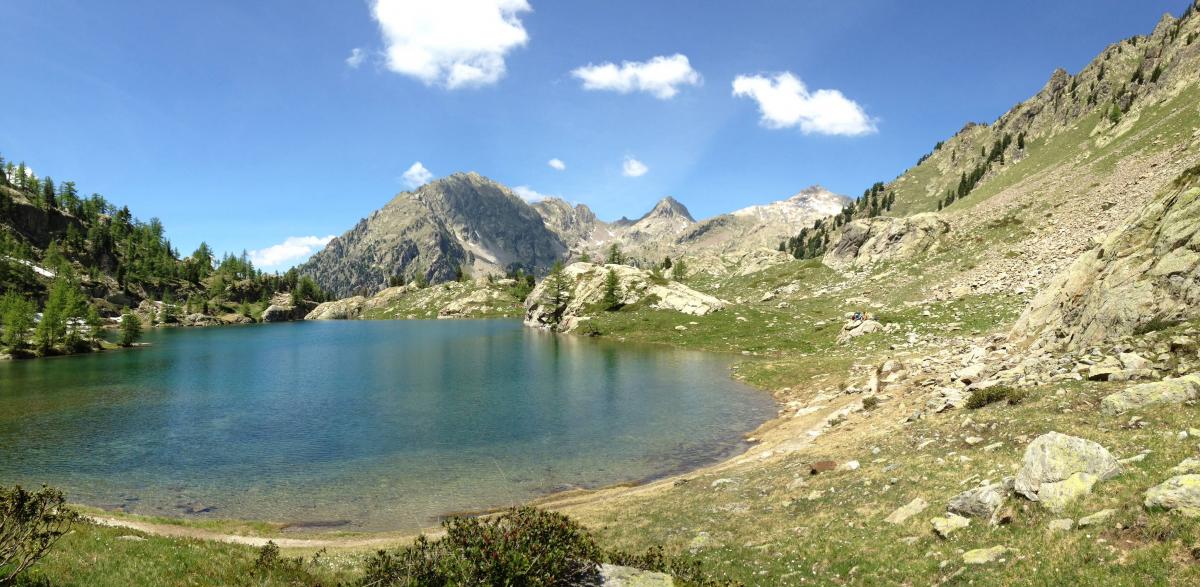Keeping protected areas information up to date: an interview with protected areas database expert Marine Deguignet
This is the fourth in a series of interviews with Natura 2000 (N2K) experts as part of the LIFE Green List for N2K project. Our interviewee has extensive experience in managing protected area databases and has recently become involved in the Green List for N2K project as a member of the European Core Working Group. The goal of the project is to adapt the IUCN Green List Sustainability Standard to the Natura 2000 network
Marine has been working with protected areas for over six years, since she graduated from university and started to work in the Protected Areas’ programme of the United Nations’ Environment World Conservation Monitoring Centre. There, she maintains and updates protected area data and information in the World Database on Protected Areas (WDPA). “I work with all countries and territories to ensure their information on protected areas are accurately reflected in the database, and I learn every day about the incredible diversity there is in terms of management of protected areas”.
Protected areas are a cornerstone for biodiversity conservation. The WDPA database is a great example of the investments that have been made, everywhere in the world, to set aside more land for conserving biodiversity, but also to support a large variety of ecosystem services, and promote capacity building, which is also part of Marine’s job. “I have been focusing on developing the programme’s area of work on capacity building to ensure countries have the necessary skills to best manage protected area data and information“.
Marine and terrestrial protected areas in Europe are facing increasing challenges, from climate change, population growth, anthropogenic activities, declining biodiversity, and changes in land use, among others. As Marine highlighted, “for example, climate change is likely to jeopardize the conservation efforts inside protected areas. While they remain effective tools for conserving biodiversity, it has already been shown that many species have started to alter their geographical distributions and phenology. On a continent where population densities are high there is not much space outside of protected areas for species to migrate to.
These challenges are even greater in Europe since the large majority of protected areas are very small in size. Over 65% of the global protected area network is located in Europe but they account for less than 15% of the total area covered with protected areas”.
Every year, Marine updates all Natura 2000 protected area data and information in the WDPA. Natura 2000 is the largest network of protected areas in the world, and covers about 18% of the European Union’s land area and 6% of its marine environment. “I have developed a good knowledge over the years of the characteristics of these sites. It has been particularly interesting to understand how these sites have been designated and are being managed in each of the 28 EU Member States.
For example, some of these Natura 2000 sites overlap, fully or partially, with other national designations; in this case understanding how the geography is managed is key to ensuring it is functioning correctly. In other instances, the Natura 2000 sites do not overlap with any other protected areas and are the main instrument for conserving biodiversity in the area”.
Marine is also involved with the IUCN Green List, a process which aims to improve the performance of protected and conserved areas so that they deliver successful conservation outcomes through effective and equitable governance and management. The LIFE Green List for Natura 2000 project is adapting this standard to the context of the Natura 2000 Network, and Marine is one of the key experts working on this project, and is part of the European Core Working Group. “The adaptation of a Green Listing process for sites in the Natura 2000 network is a great way of ensuring these sites are managed in the best possible way to deliver successful conservation outcomes, and that any shortcomings identified in the review against all indicators are addressed“.
As for Marine’s favourite Natura 2000 site, it is the Parc du Mercantour in Southeastern France. It is a national park as well as a site of community importance and a special protection area. “The Parc du Mercantour is one of the wildest national parks in the country and one of the most varied in terms of landscapes. Over 8,000 different species of fauna and flora species live there. In 1987, the Parc du Mercantour was twinned with the Italian provincial park Parco natural delle Alpi Marittime. The twinning is a great example of the acknowledgement that nature has no political borders. The two countries have been working on various activities and programmes of biodiversity conservation and awareness raising for over 30 years“.
More information about the 'Green List for Natura 2000' project can be found here. If you’re interested in learning more about the project you can also contact catarina.ferreira@iucn.org.






